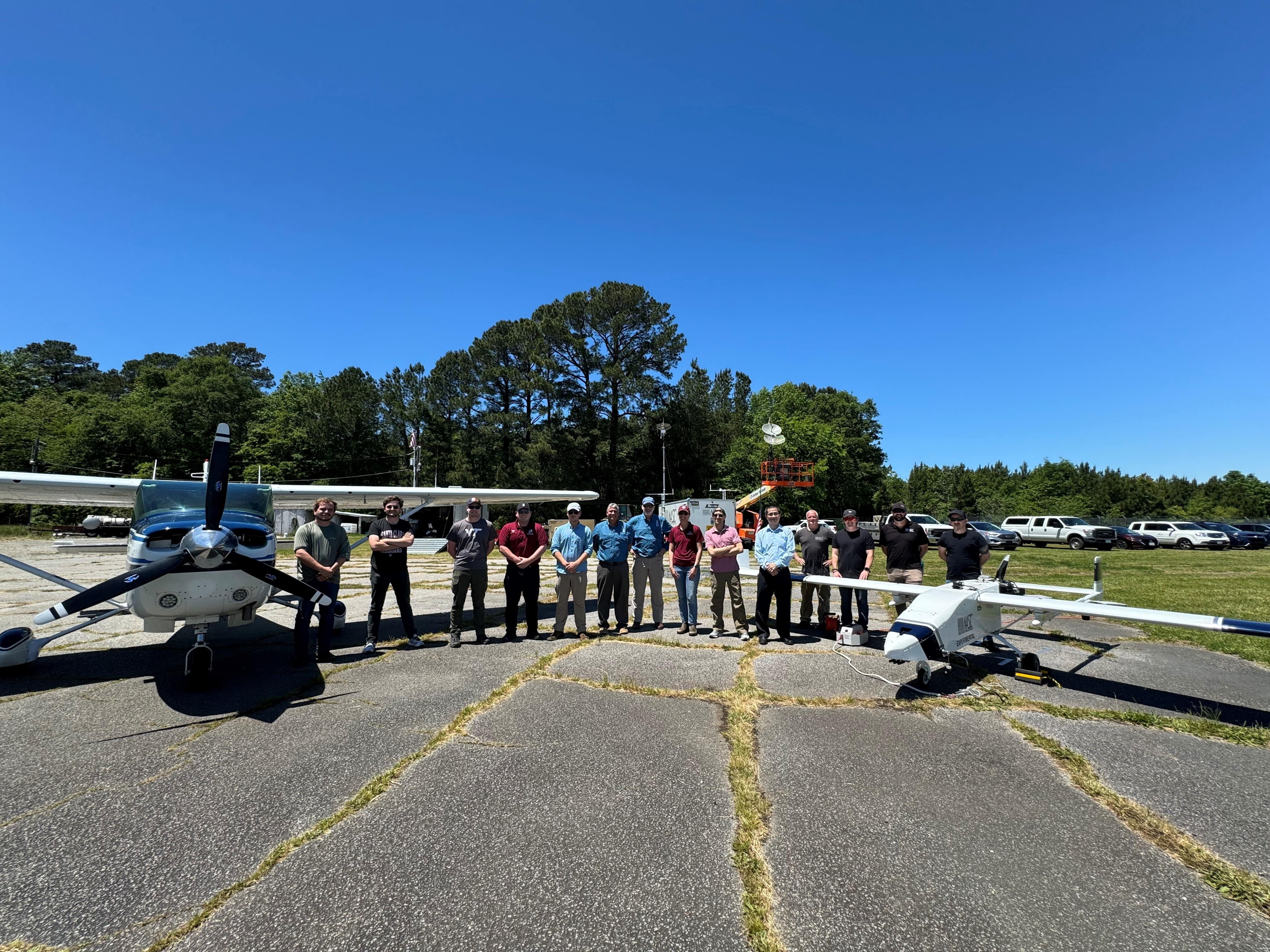Embry-Riddle and Key Stakeholders Collaborate on Uncrewed Air Systems Live Flight Project

An Embry-Riddle Aeronautical University team recently leveraged their expertise in aviation operations, project management and uncrewed aircraft systems to further safety and drive innovation in integrating these vehicles into the airspace.
The team’s work was part of the Low-Density Uncrewed Aircraft System Communications Evaluation (LUCE) Live Flight Project, initiated by the Federal Aviation Administration. The project brings together key industry and academic stakeholders, agencies and institutions to assess the feasibility and effectiveness of integrating uncrewed aircraft systems (UAS) that weigh more than 55 pounds into the National Airspace.
Partners on the project include:
- Embry-Riddle Aeronautical University
- Texas A&M University-Corpus Christi’s Autonomy Research Institute (ARI)
- Mid-Atlantic Aviation Partnership (MAAP)
- Navmar Applied Sciences Corporation (NASC)
- Avision
- Microtheory Engineering
- LS Technologies
- William J. Hughes Technical Center (WJHTC) for Advanced Aviation
A key focus of the project is to ensure robust communication protocols between UAS remote pilots and air traffic controllers.
“The LUCE project represents a collaborative effort to address key challenges for the expanded use of UAS in diverse applications and marks a step forward in advancing aviation safety and efficiency,” said Kirsten Kasper, senior project manager and director of Advanced Programs at the Florida NextGen Test Bed (FTB) at Embry-Riddle.
The LUCE project utilized large UAS platforms for live flight demonstrations at two locations. The first live flight demonstration was conducted in April 2024 at Accomack County Airport in Accomack County, Virginia, during which MAAP facilitated range safety. The second demonstration was facilitated by ARI in June 2024. The scenarios for these flights included fixed oil platform cargo flights and grid pattern flights.
The Project Management Office at Embry-Riddle played a crucial role in managing the LUCE Live Flight Project. This included coordinating aspects of the project — such as planning, resource allocation, safety risk management processes and stakeholder engagement — to ensure the successful execution of live flight tests. The Embry-Riddle team also worked closely with technical teams and employed risk management strategies.

The LUCE team prepares the Navmar Applied Sciences Corporation’s Tigershark and a Cessna chase plane at Accomack County Airport in Virginia. (Photo: LUCE Team)
Students Gain Valuable Experience
Aviation Management MBA candidate Anna Miller participated in the LUCE project and supported both technical and programmatic initiatives, including organizing events and creating multimedia presentations of LUCE capabilities while contributing demonstrations of proof of concept.
“It was so rewarding to be a part of the LUCE project,” said Miller, who also completed her bachelor’s degree in Aeronautical Science at Embry-Riddle. “The ability to use my aviation background while deepening my experience in project management on such a dynamic project was a unique and fulfilling opportunity. I am so grateful for this opportunity to learn and contribute to a project that will ensure safety in the future for UAS,” she added.
Ethan Chamberlain, a junior studying Aerospace Engineering, also played a key role in the LUCE project, assisting in the creation and review of technical documents and timelines.
“The best part about working on LUCE was the opportunity for involvement,” Chamberlain said. “I was able to gain valuable experience while hosting meetings and creating documents that were key elements of the project. During this process I was able to learn a lot about UAS operations and team elements to making a project work.”
LUCE project data analysis and outputs will be reported back to the FAA to provide insights to address the complexities of UAS integration. Chris Kokai, director of operations at the Florida NextGen Test Bed, said that “by leveraging expertise from academia, research institutions and industry partners, we can develop innovative solutions that ensure the safety of flight, personnel and property.”
